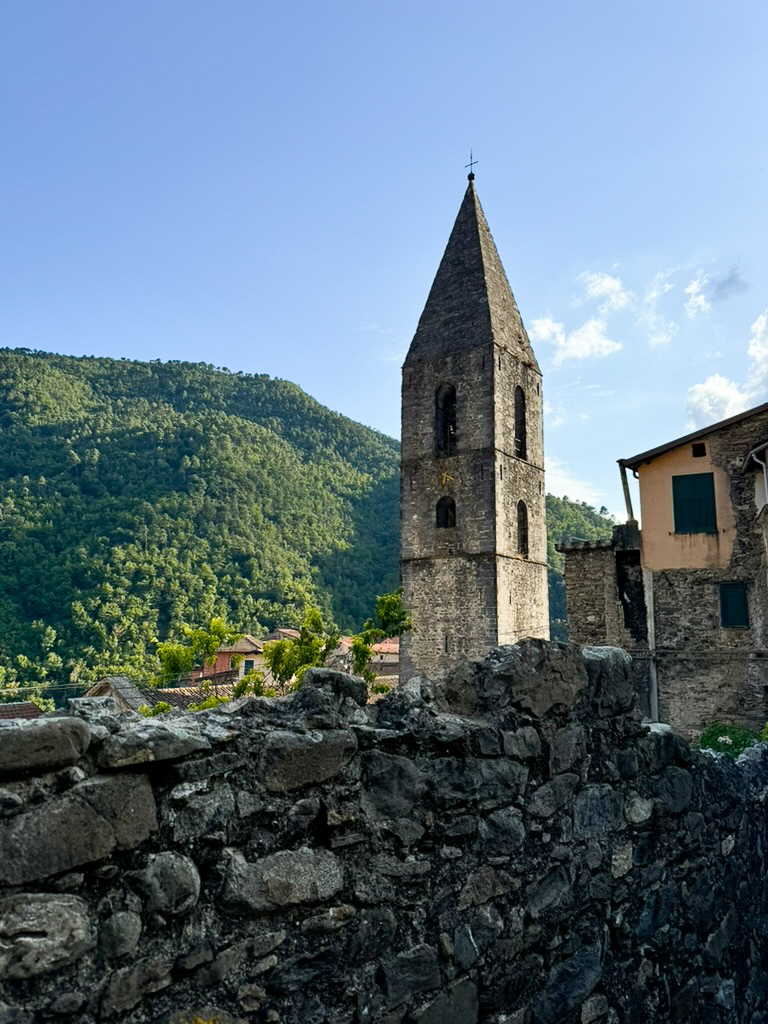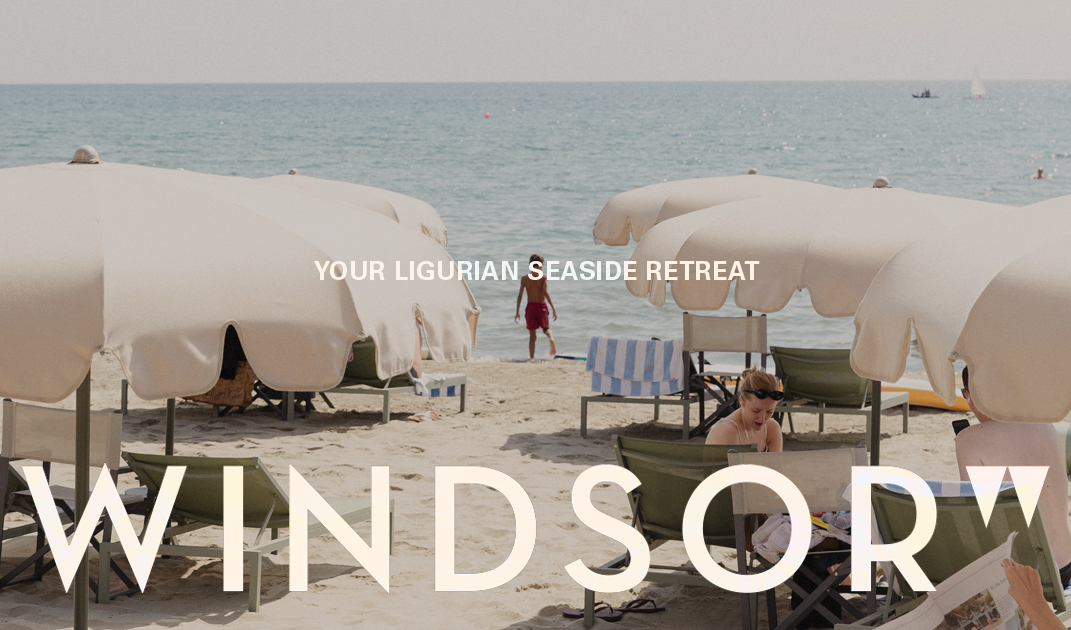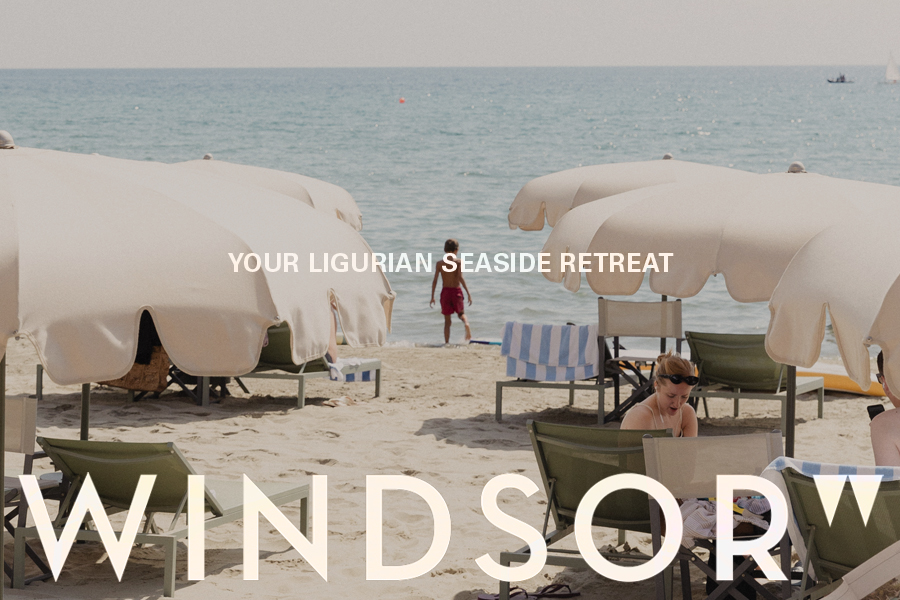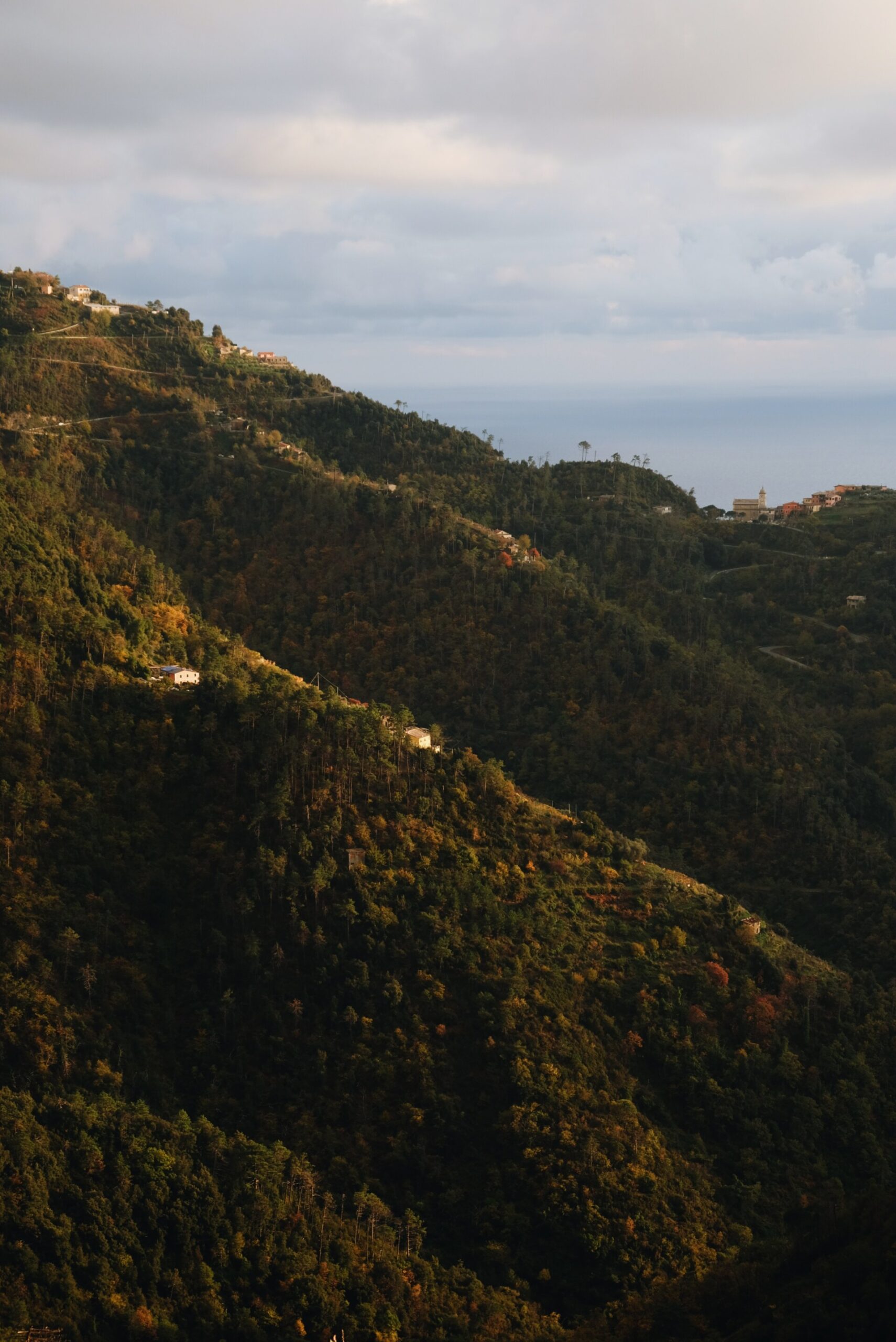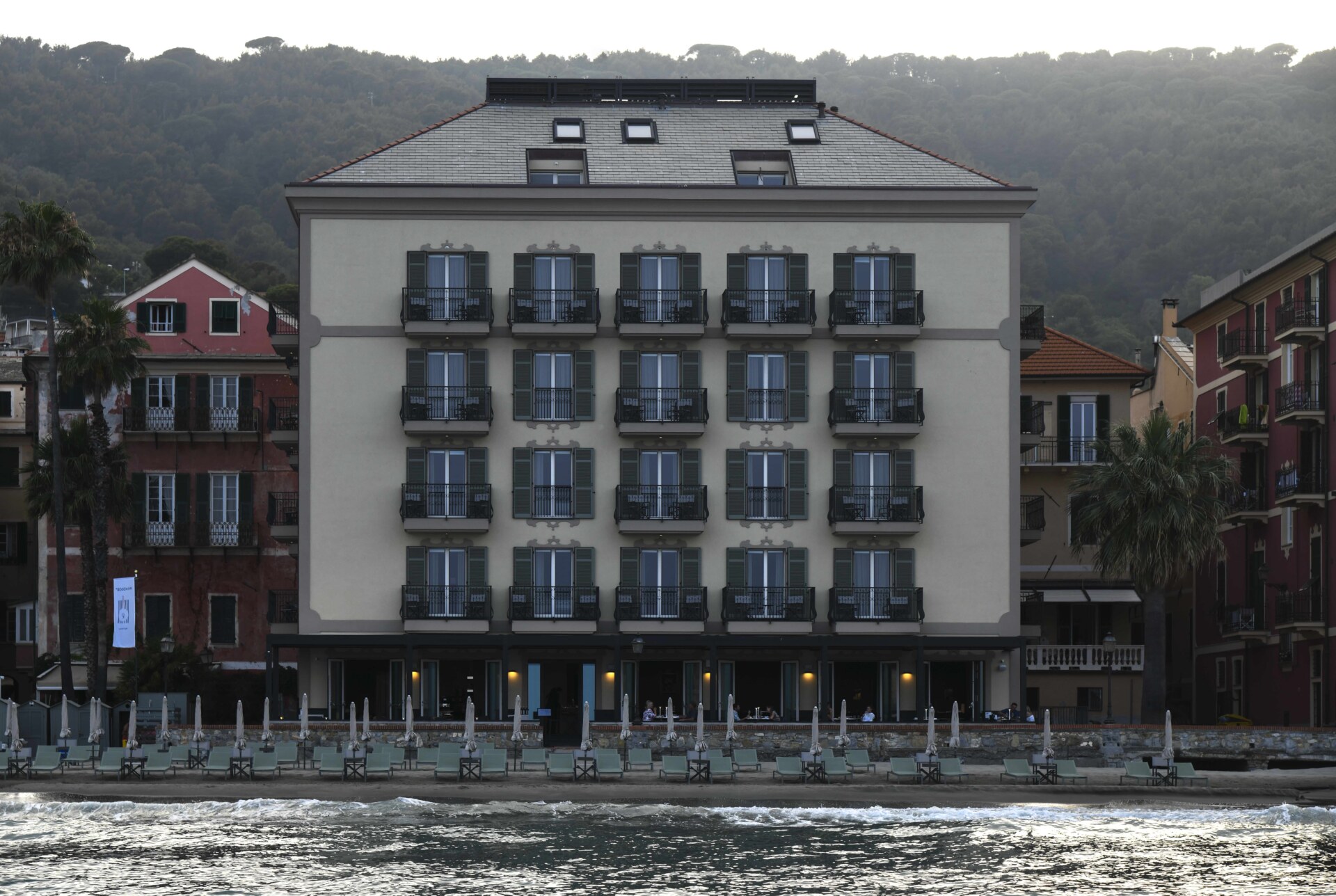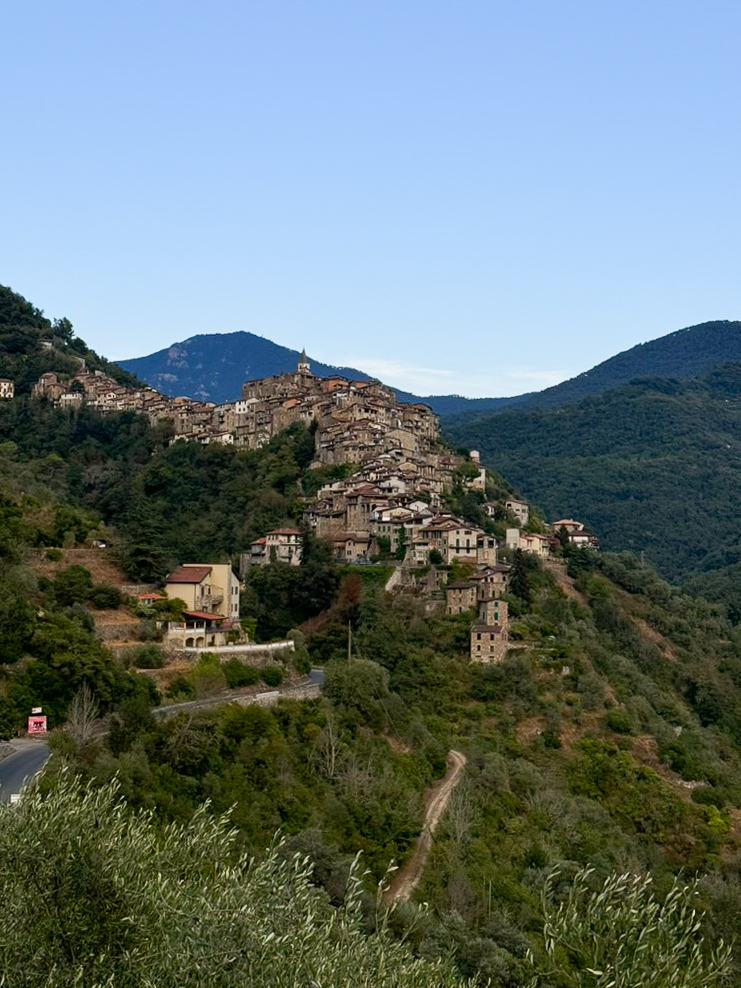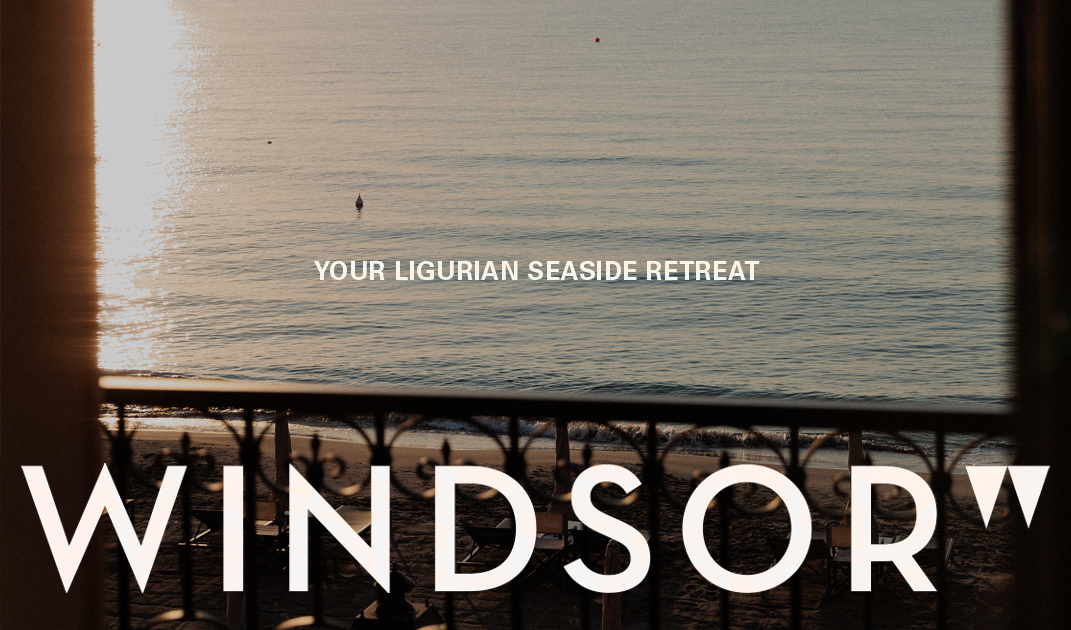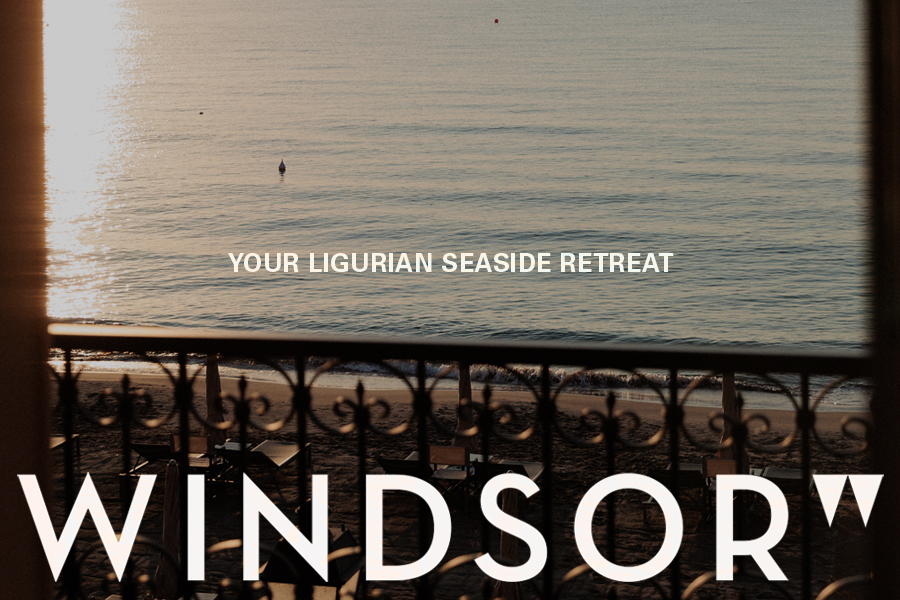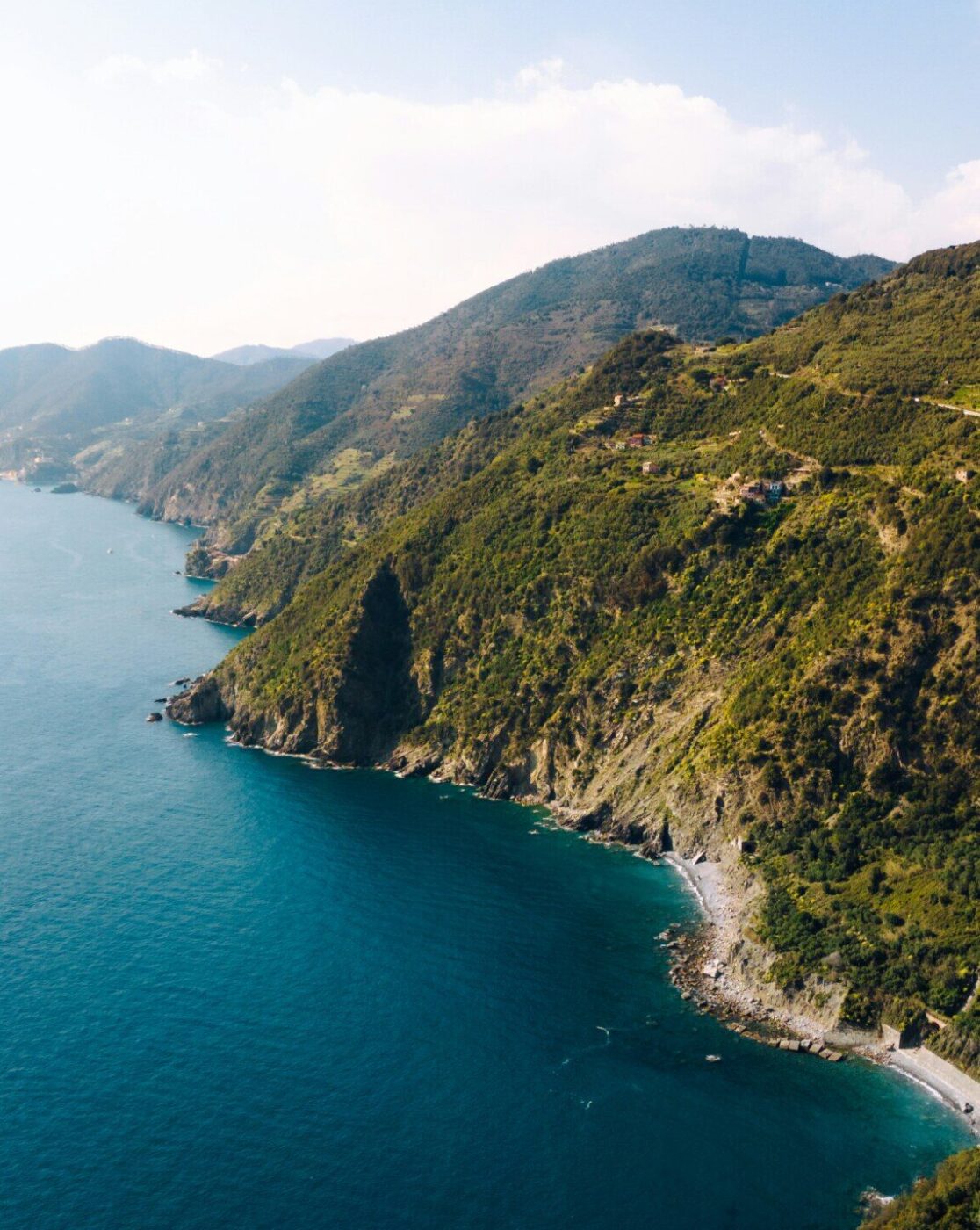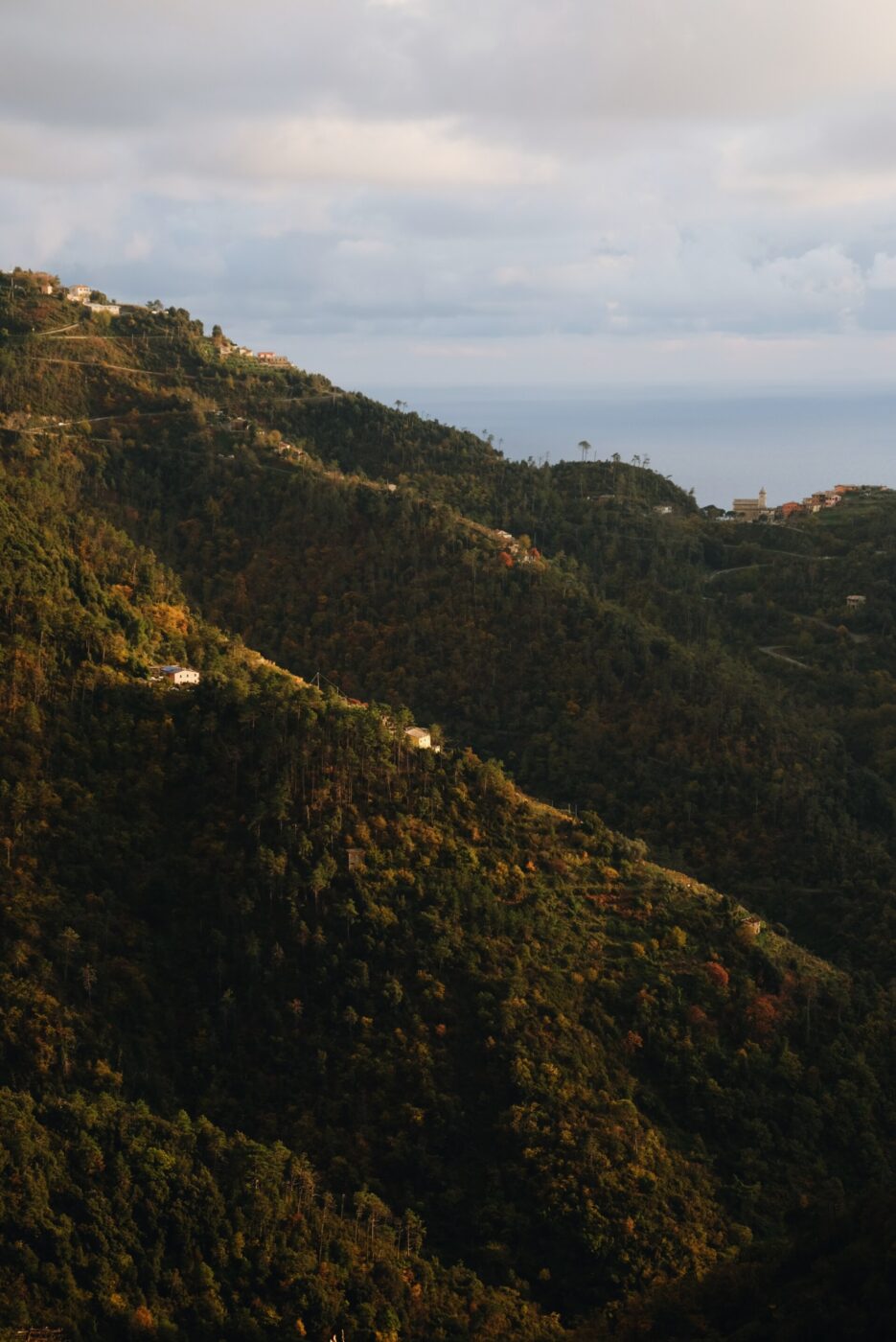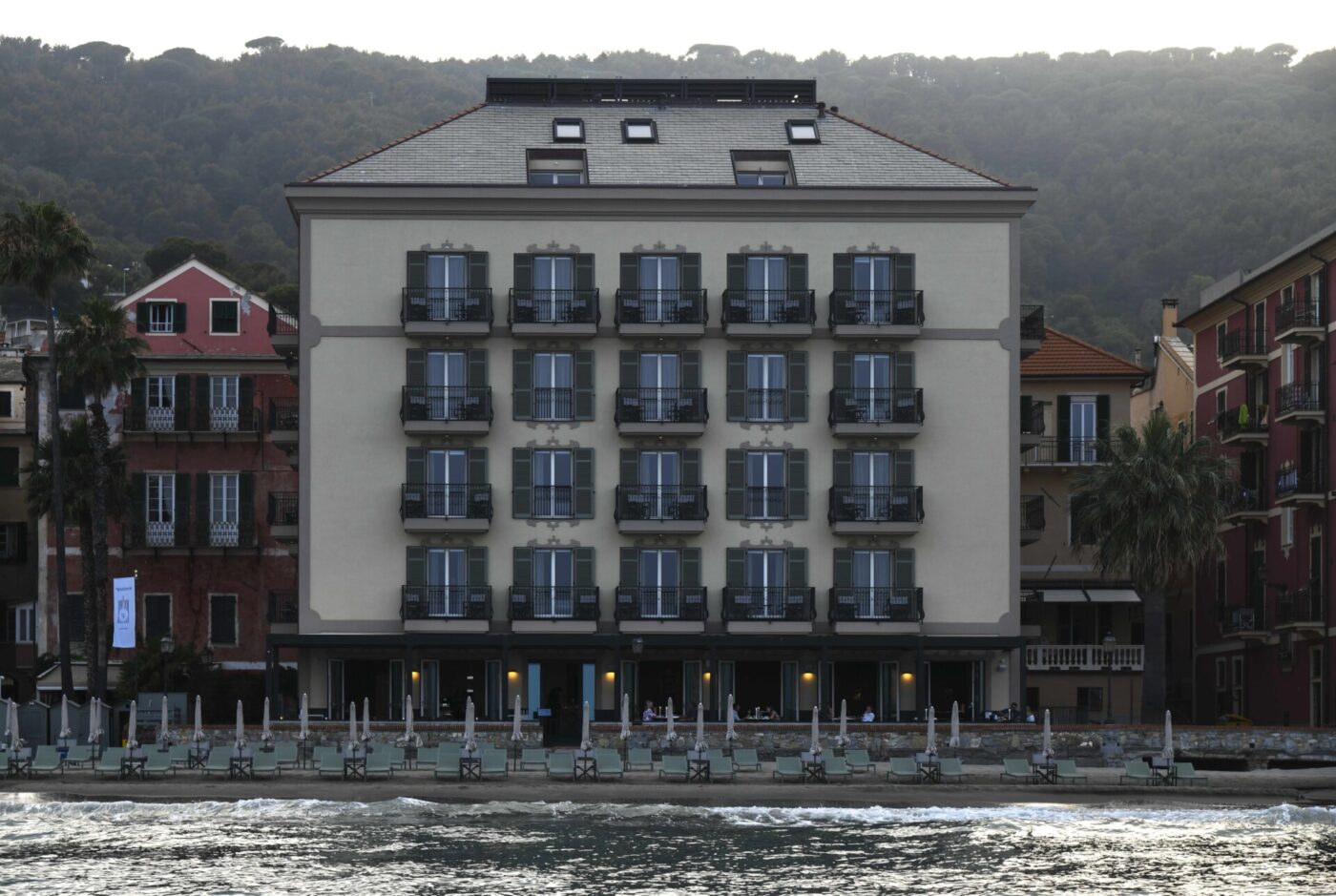Everyone knows Liguria for its sea—the ribbons of turquoise, the piazza of Portofino, the pics from Cinque Terre. But woefully underappreciated is the hinterland: venture inland from the Riviera and you enter a different world—one of terraced olive groves, misty chestnut woods, and ancient stone villages clinging to hillsides. Italo Calvino, who spent his youth in these parts, once wrote of not one but many “Liguries”: the gilded Riviera of Sanremo’s casinos, the seafaring Genova with its port of farewells, and the rugged backcountry—“maigre et osseuse” (lean and bony)—of dry-stone terraces, a land he held dearest.
This hinterland, Liguria’s “patria spirituale” (“spiritual homeland”) as Calvino called it, is a paradise for the outdoorsy and remains a treasure trove of hilly hamlets, folk traditions, and soul-stirring cuisine. In the valleys of Argentina, Arroscia, Merula—and tucked-away folds of the Alps near the French border—off-the-beaten-path travelers will be rewarded with a lesser-known Liguria.
That’s not to say we don’t love the seaside (because we really do). To get the best of both worlds, pair backcountry exploration with a stay by the sea. Laigueglia—a small fishing village with lush green hills and a tangle of colorful houses—feels like a quieter cousin of the beloved towns farther down the coast. Here, the once-abandoned Hotel Windsor has found its renaissance, thanks to hotelier Alessandro Sironi, who spent childhood summers in the village and later returned to restore its elegance.
The 25-room boutique hotel is the perfect home base: its sea-facing rooms, designy interiors, and golden-age glamor feel like a wink to the Liguria of old postcards—though the real luxury is how close it places you to the mountains behind. Wake up to waves, and by mid-morning, you could be hiking through beech forests or eating chestnut cake in a cozy trattoria.
Here, a quick guide to three of the most beautiful valleys in Liguria’s hinterland.
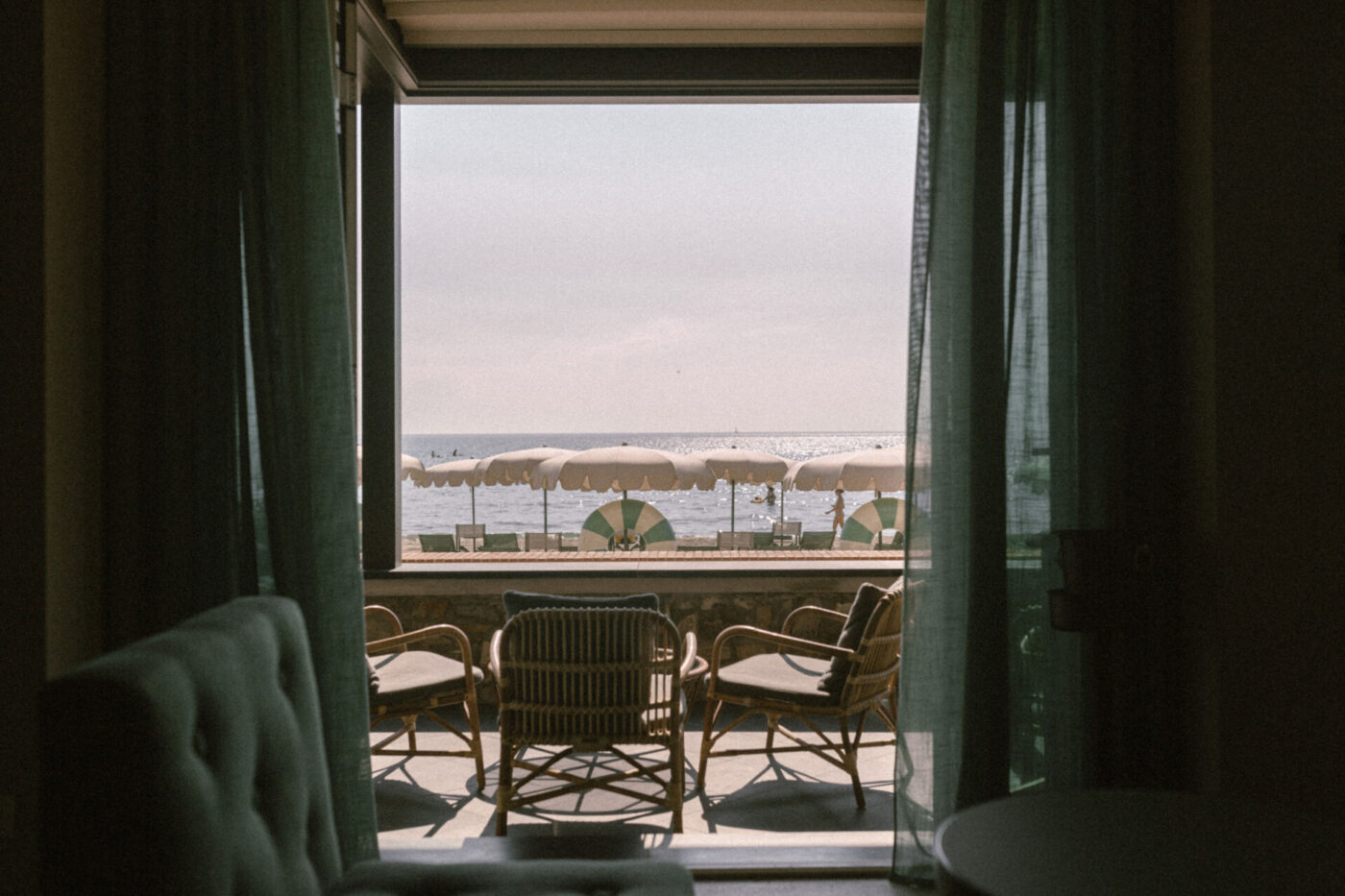
Hotel Windsor; Photo by Gina Spinelli
VALLE ARGENTINA
Down in the Argentina Valley, Apricale is everything you want a Ligurian fairytale-esque town to be, clinging to a sunlit slope—its name comes from the Latin “apricus”, meaning sunny, after all. Murals and poetry cover the walls of its narrow streets, and every September, the Pansarole and Zabaione festival celebrates the town’s signature fried pastries. These light, golden fritters are made from a dough enriched with lemon zest and anise liqueur, fried until crisp, dusted generously with sugar, and traditionally served warm with a bowl of frothy, wine-laced zabaione.
Up in the mountains, Triora is infamous as the “village of witches.” In the late 1500s, famine hit Triora, and dozens of women were accused of witchcraft; some died in prison before the Inquisition halted the trials. Today, Triora commemorates this dark chapter at its Museo delle Streghe (Witch Museum), which displays ancient trial documents and even the instruments of torture from that era, and every August, the village holds Strigora, a festival where costumed witches roam the cobbled lanes.
Luckily, not all of Triora’s story is so sordid. Here you can also find a celebrated country loaf called pane di Triora—the town was once a major supplier of wheat to the Republic of Genova—which is still baked in old stone ovens. And, in autumn, the chestnut festival honors the humble nut that once kept these mountain communities alive in lean times, with roasted chestnuts, local honey, and traditional soups like grano pestato, a rustic mix of cracked wheat and leeks.
A short drive away lies Bussana Vecchia, once flattened by the 1887 earthquake and later left to crumble. For decades, it was a ghost town—until the late 1950s, when a group of artists led by ceramist Mario Giani, known as Clizia, decided to bring it back to life. With no water, no electricity, and no legal claim to the buildings, they set about creating a self-governed commune devoted entirely to art.
Today, the village still bears the marks of that bohemian reinvention. Cracked staircases open onto sculpture gardens, and the baroque church, roofless, feels at once sacred and surreal. Walk a few minutes and you might stumble into a ceramic workshop, a shadow-puppet theater, or an impromptu concert in someone’s living room. And while the village has changed—more visitors, fewer communes, a bit more regulation—the creative spirit hasn’t vanished.
Last but certainly not least: Taggia—a mecca for olive oil fanatics. Grown on steep terraces and hand-harvested in the hills around Taggia, the olives yield what might be our favorite oil in all of Italy—smooth, golden, and faintly sweet, with notes of almond and pine nut. We love to work it into pesto, brush it on focaccia, rub it onto grilled fish, or drizzle it over torta verde (a savory Ligurian pie of rice, greens, and cheese) and anything else under the sun.
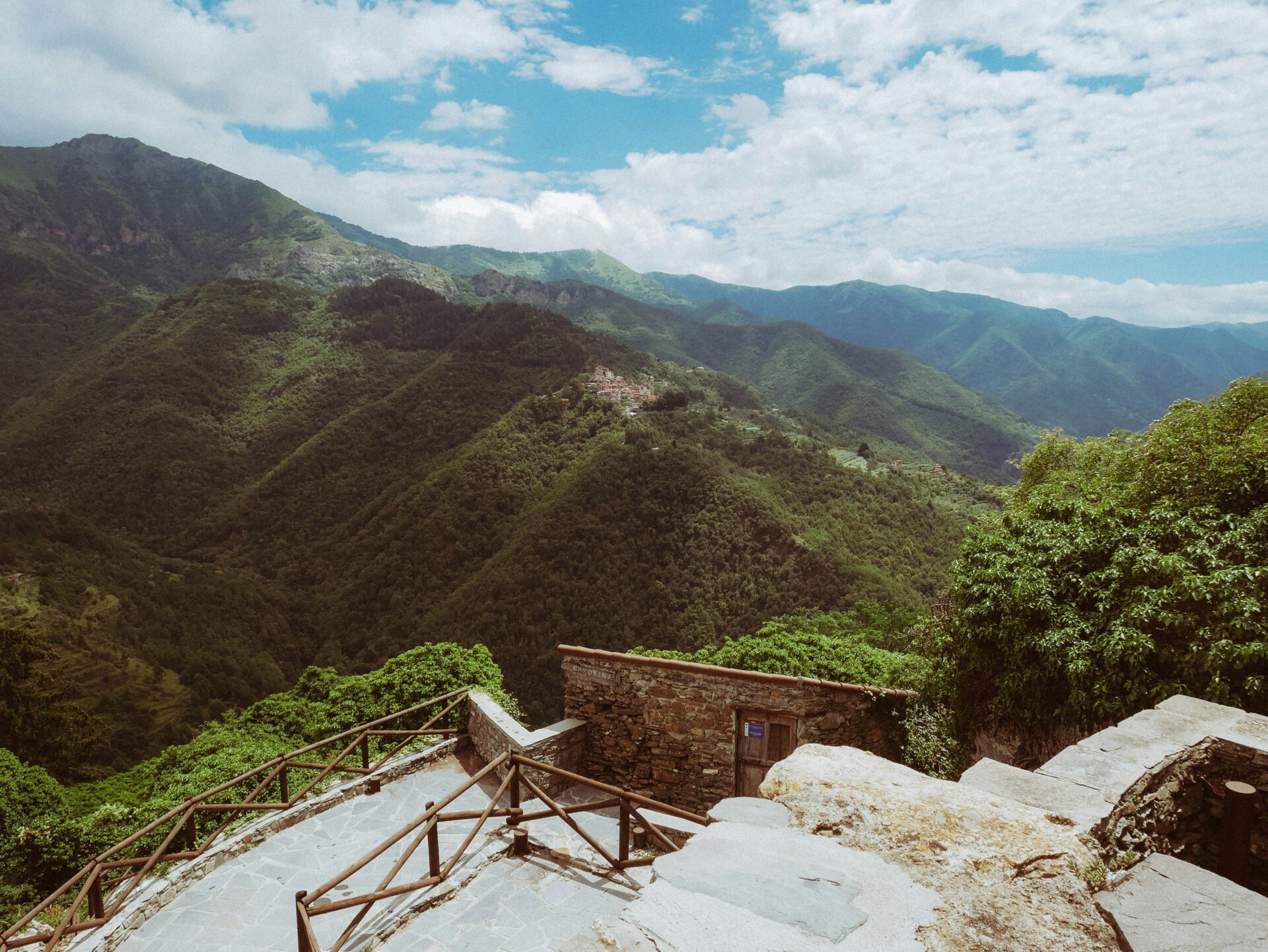
VALLE ARROSCIA
Heading east into the Valle Arroscia, the landscape softens into gentle green ridges. The medieval market town of Pieve di Teco sits at the valley’s center, a strategic crossroads on the old salt road between Liguria and Piedmont. In the 15th century, the prosperous townsfolk built handsome portici—long arcaded sidewalks—to host busy weekly markets and fairs. Those arcades—besides being utterly charming—still shelter bakers, butchers, and spice merchants as they have since the Renaissance, and one of Italy’s smallest historic theaters, the 19th-century Salvini Theatre, hides just off the main street.
Upriver, the village of Vessalico is tiny, but every summer it draws crowds for an unlikely reason: garlic. The Aglio di Vessalico, an ancient local garlic variety, has been cultivated here for at least two centuries and is so renowned it’s now a protected Slow Food Presidium. Grown organically on narrow terraces, harvested by hand, and woven into long braids called reste, Vessalico’s garlic has a delicate aroma and gentle spice that’s prized by Ligurian cooks, who pound it into ajé, a traditional creamy garlic-oil sauce similar to Provençal aioli that gets smeared on rustic bread and boiled potatoes. In July each year, farmers from across the Arroscia Valley converge in Vessalico’s meadow for the Fiera dell’Aglio—an open-air garlic fair that’s been held since Napoleonic times.
On the border of the valley is Pigna—not only architecturally charming, but renowned for its natural hot springs, making it Liguria’s only spa town; these thermal waters have been a draw since Roman times. The village is also famous for its delicate white beans, featured in local dishes alongside goat meat or simply dressed with Taggiasca olive oil.
Arroscia Valley’s other specialties include Ormeasco di Pornassio, a robust red wine produced from terraces on these slopes, and the brigasca sheep, a native breed, which provides milk for toma brigasca—a nutty, Slow Food-protected cheese often paired with polenta or tucked into casseroles.
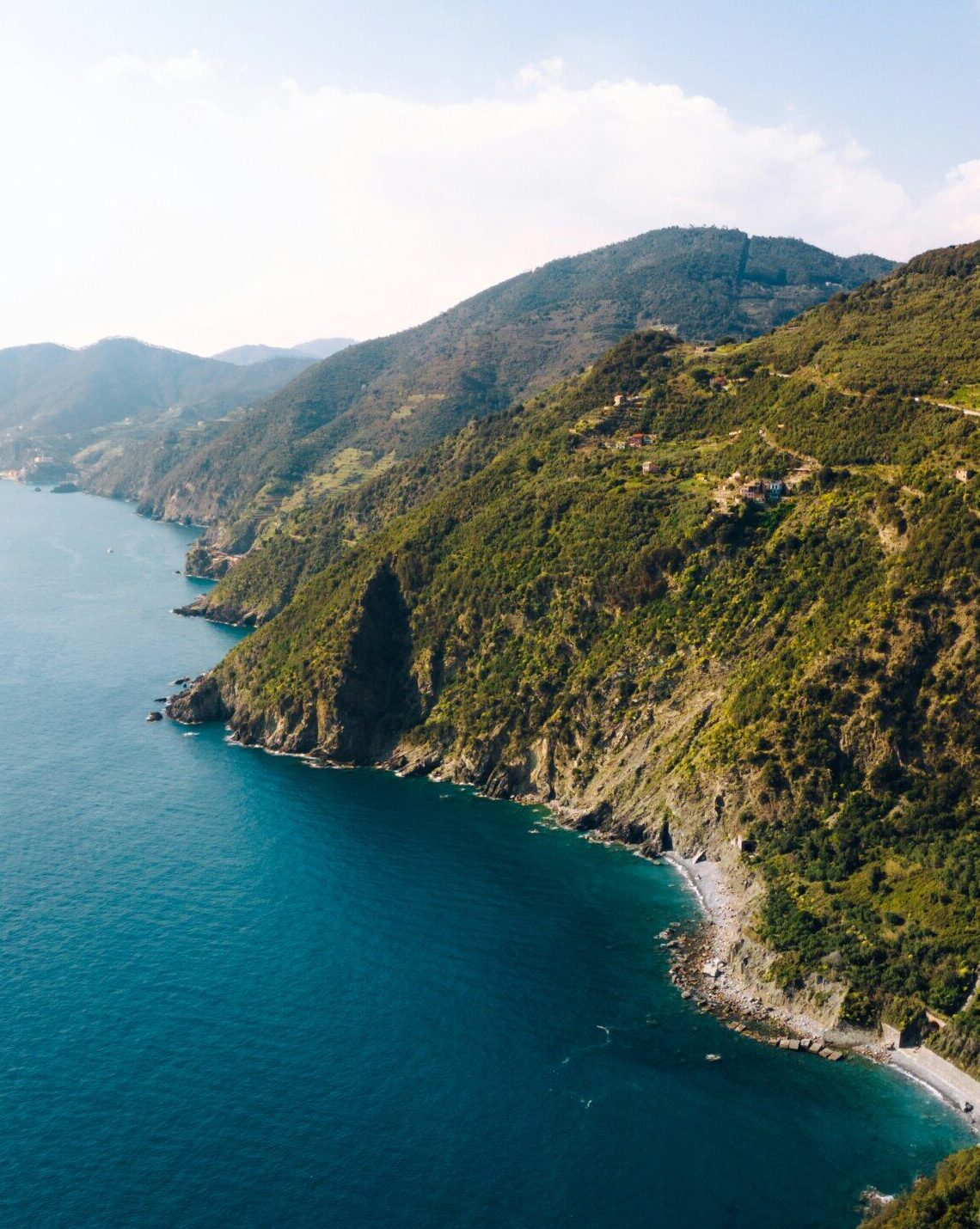
VAL MERULA
Less dramatic than the other two, Val Merula offers a quieter beauty: the Merula stream flows from Monte Arosio to the sea at Andora, passing through Testico and Stellanello, where lemon trees mingle with olive groves. In spring, the hillsides burst into bloom and birdsong fills the air—the valley is a hotspot for migratory species (birdwatchers, take note).
This is also cyclist country. The ridges above the valley offer panoramic views and smooth gradients, ideal for road biking. A great loop begins behind Laigueglia, climbs to the ridge near Testico, and then heads back toward the sea. (Plus there are stops for espresso and local cheese along the way.)
Hikers can follow old mule tracks up to the Santuario di Santa Croce, a hilltop chapel with panoramic views of the sea and the mountains or explore trails that begin in Val Merula and connect with the Alta Via dei Monti Liguri, a long-distance path tracing the length of the Ligurian Alps.
